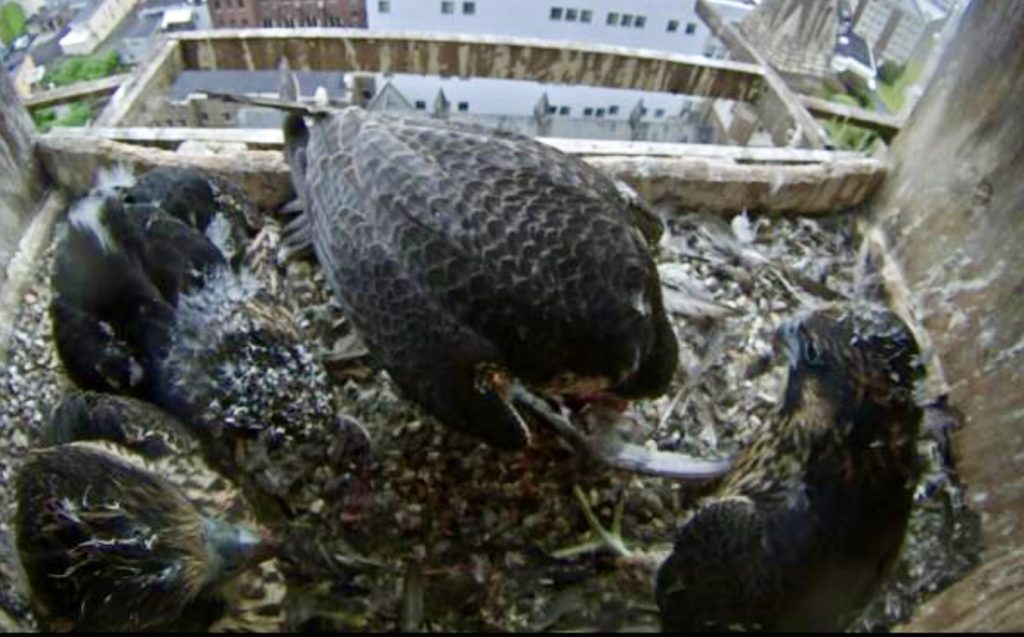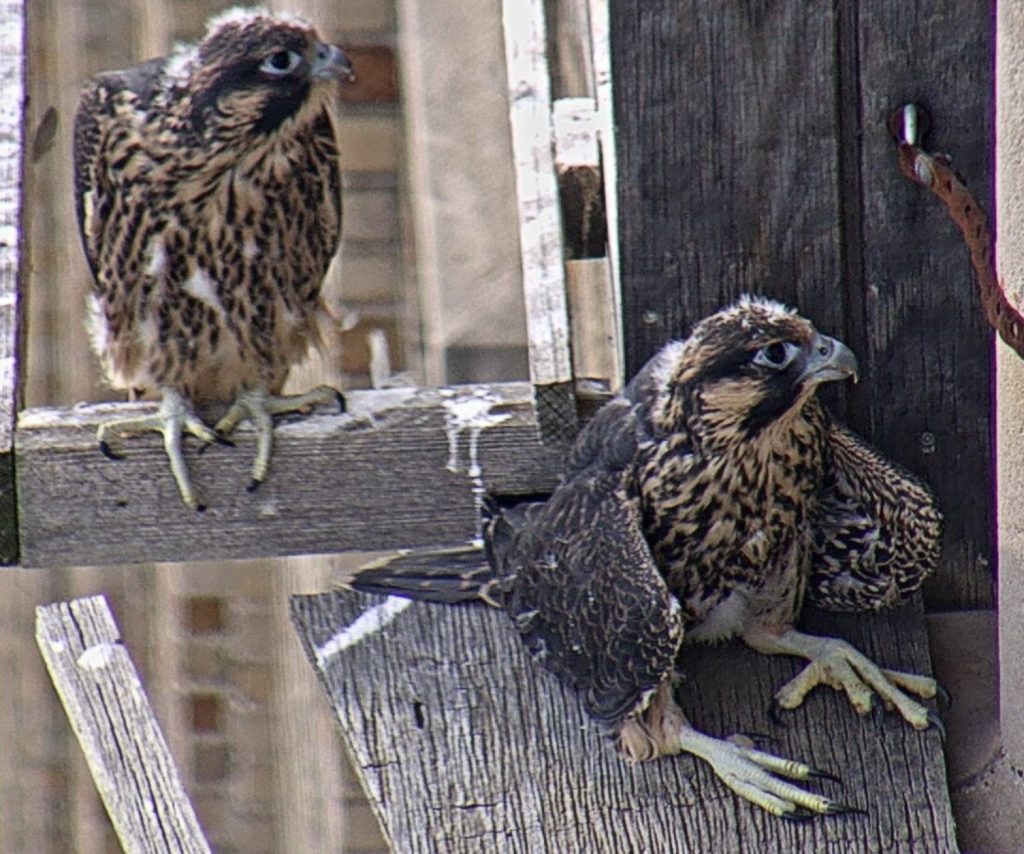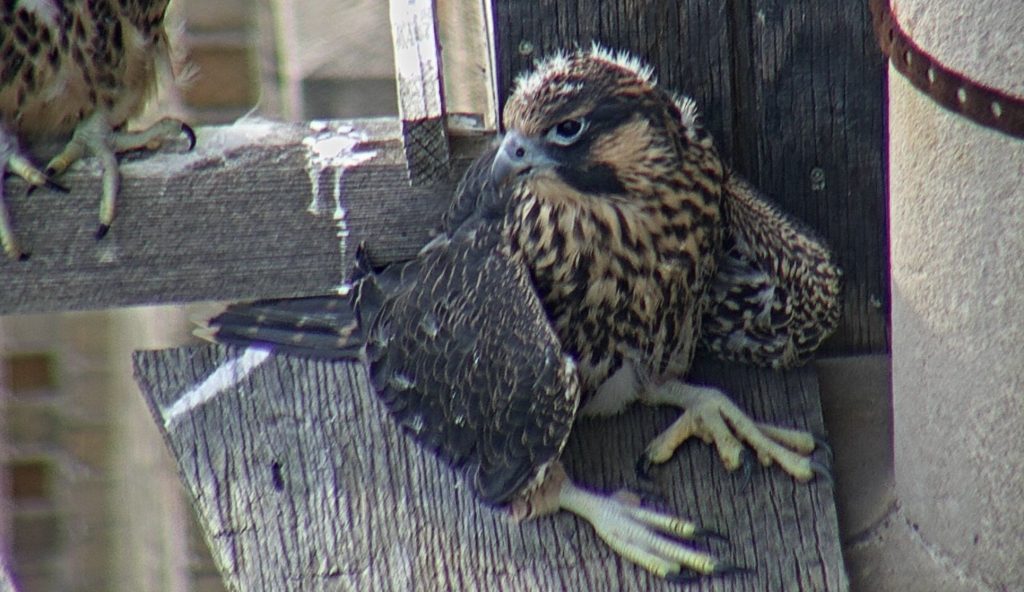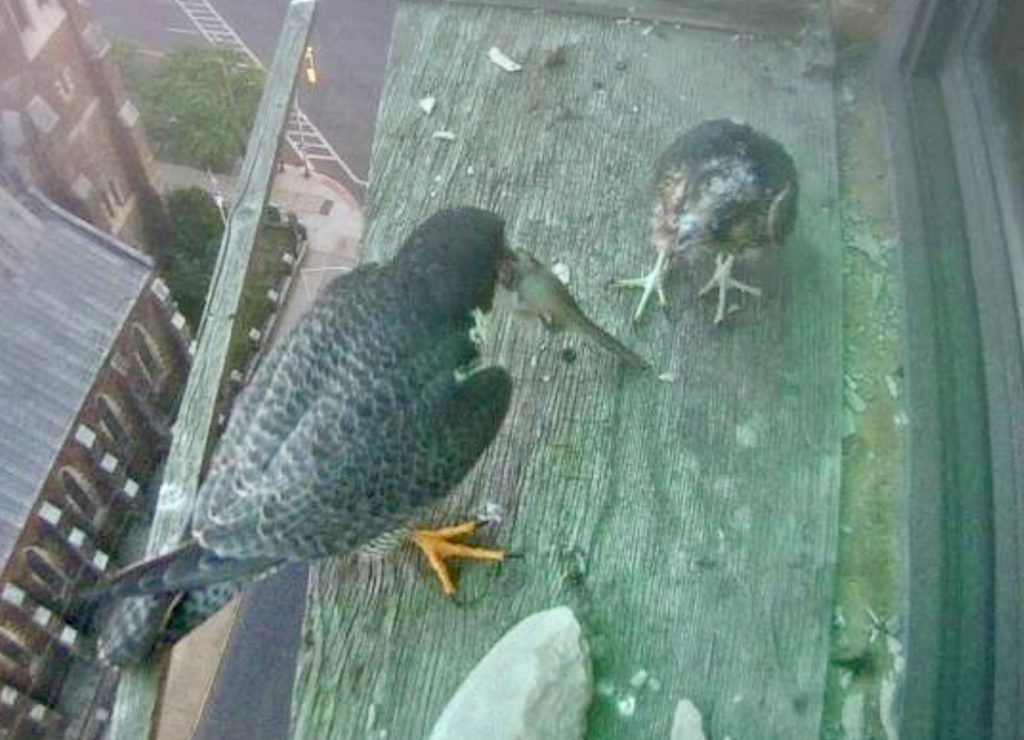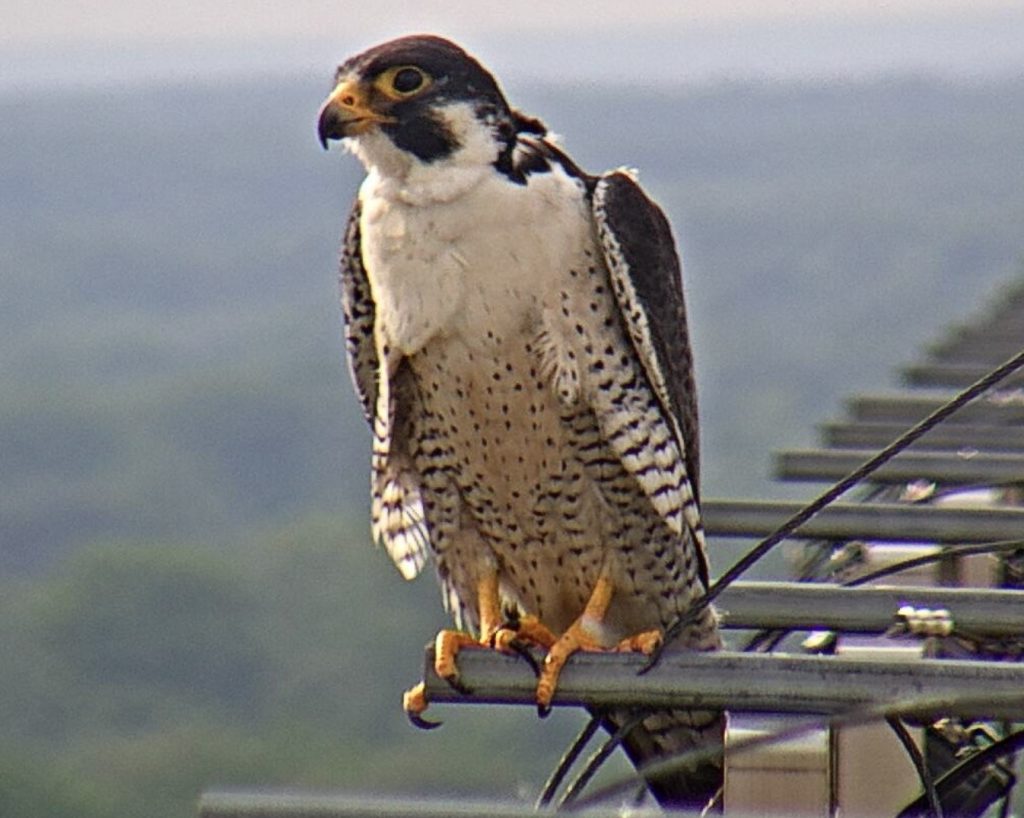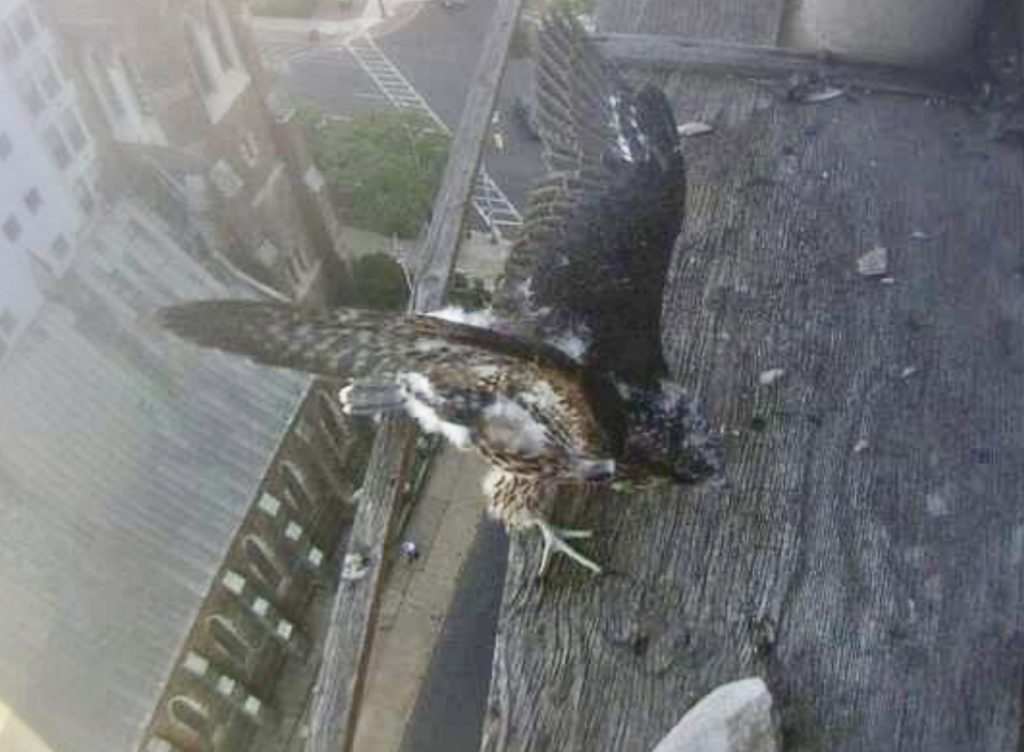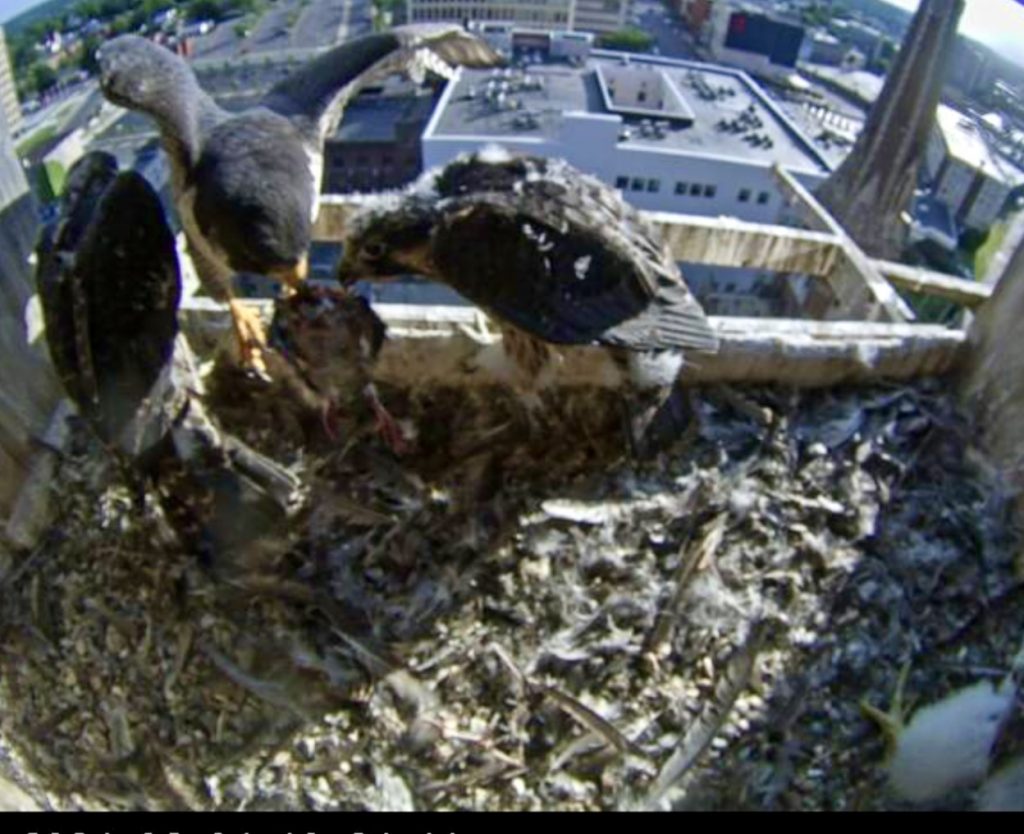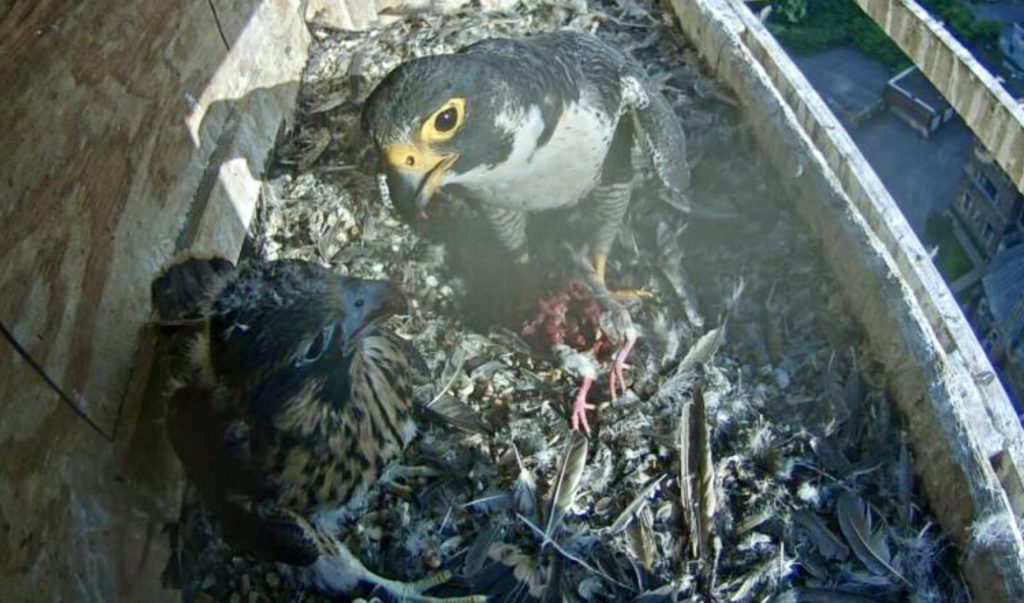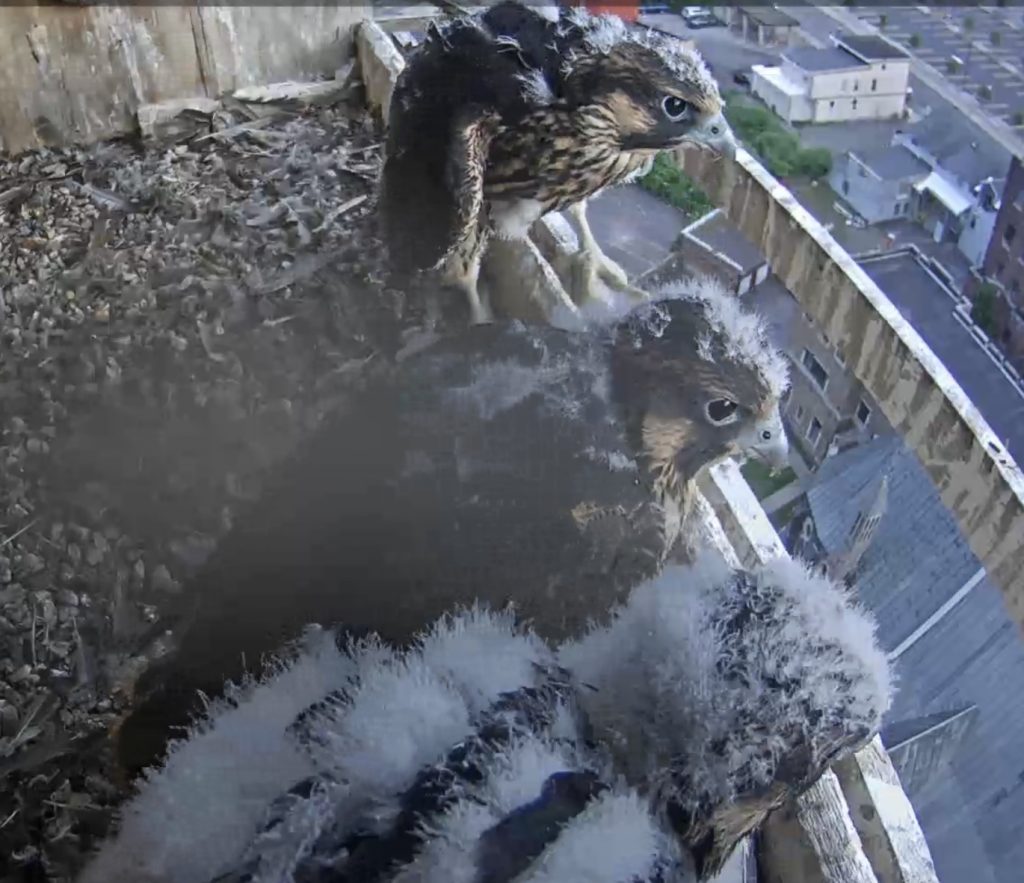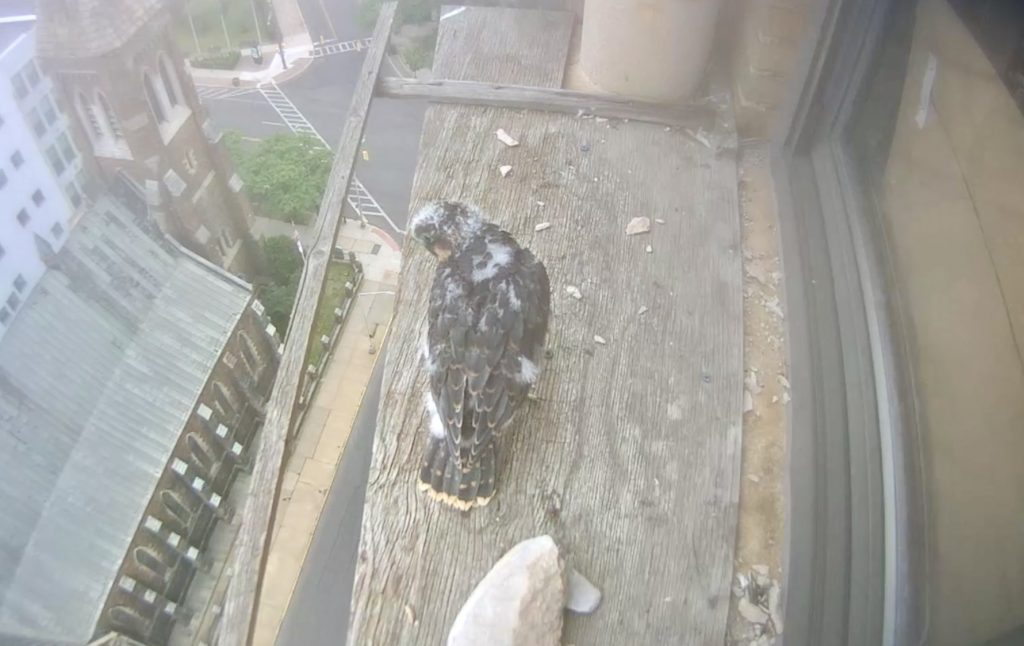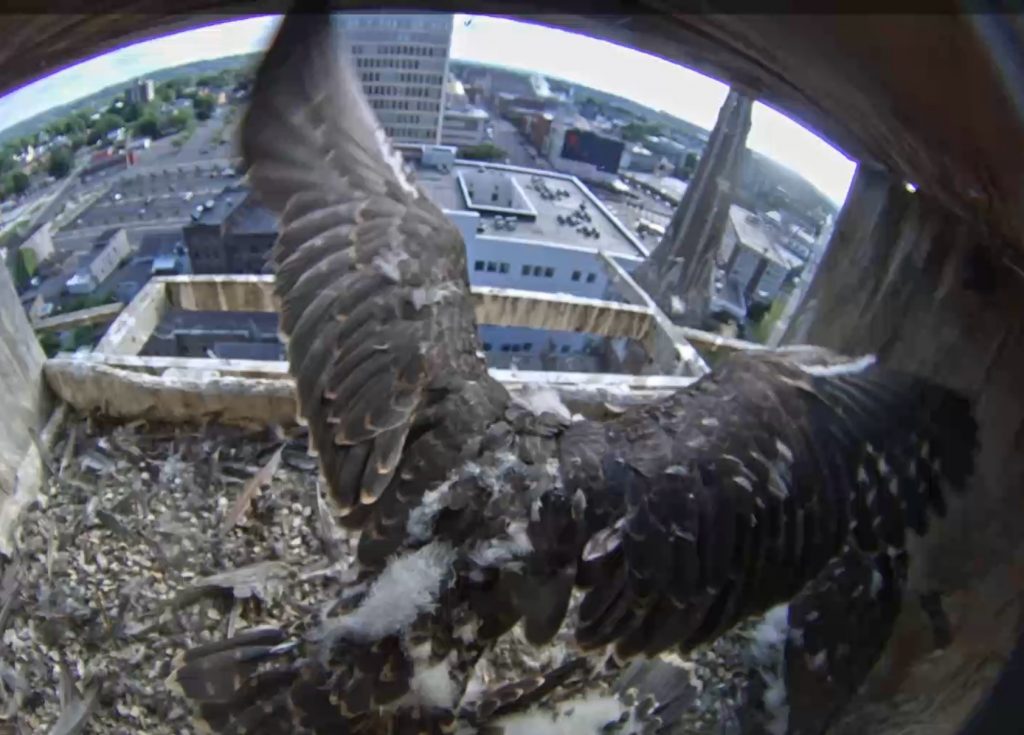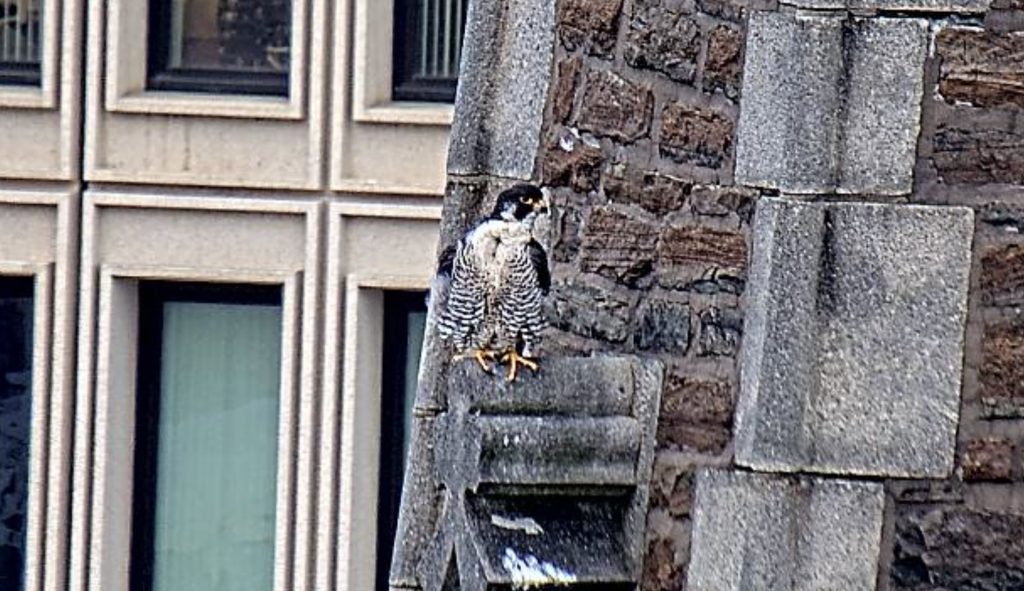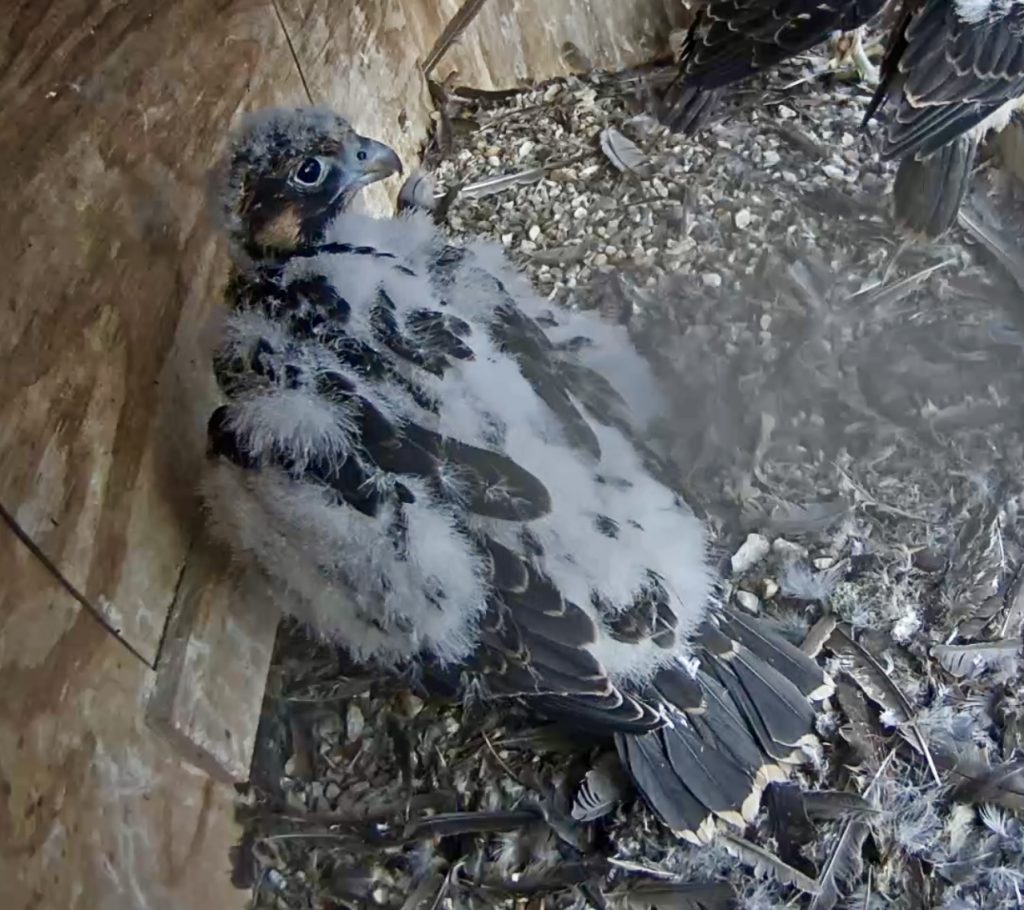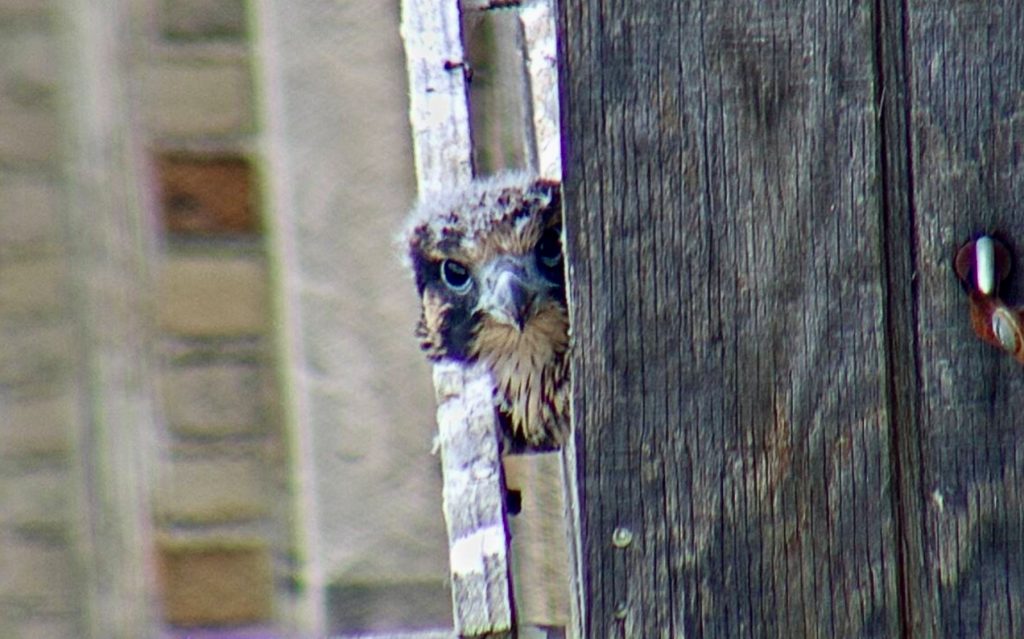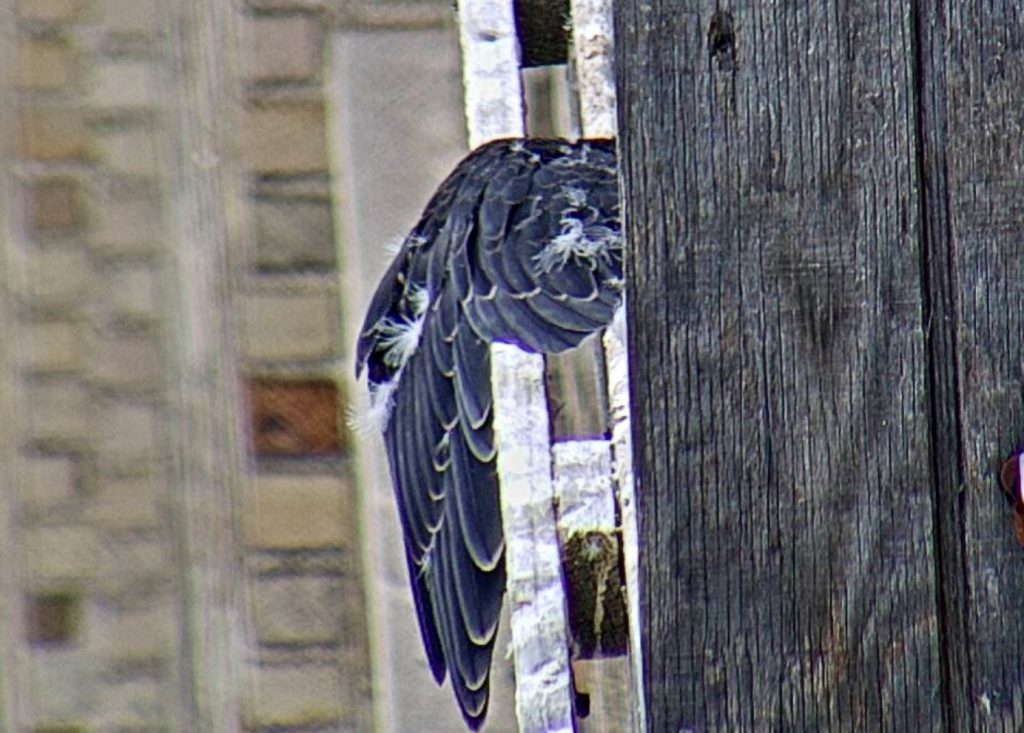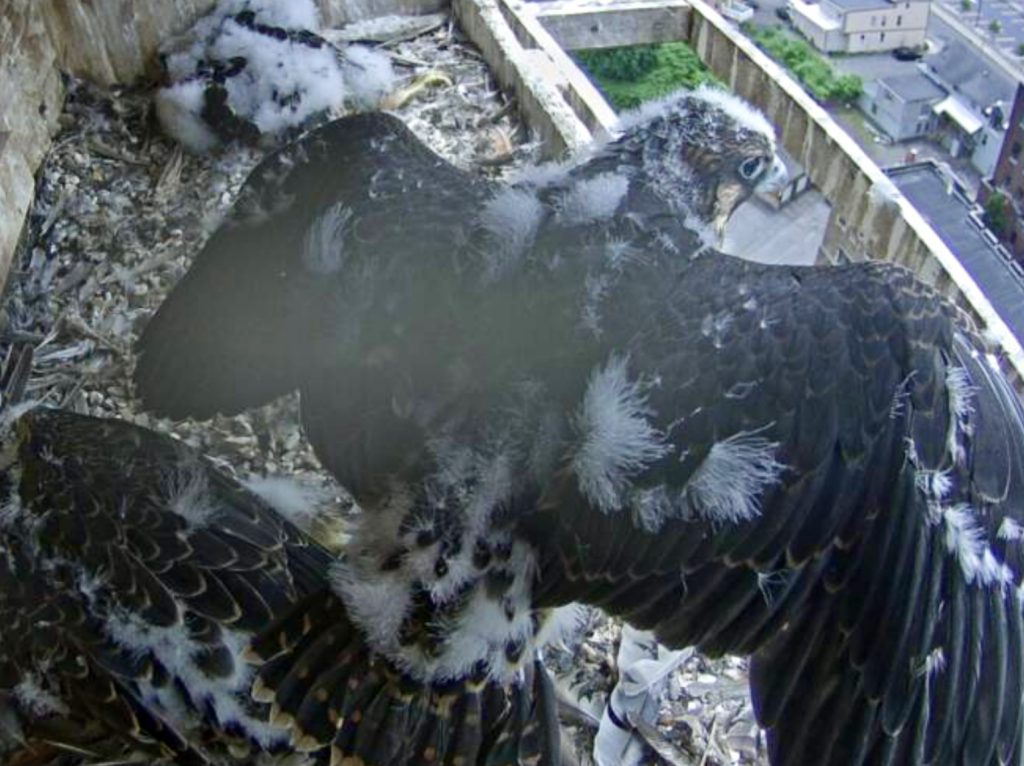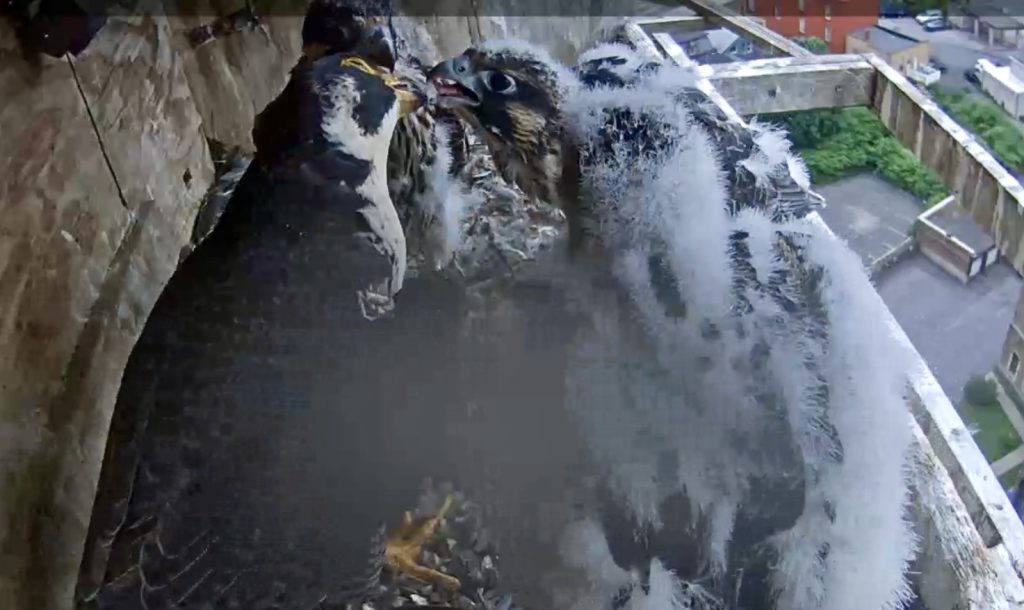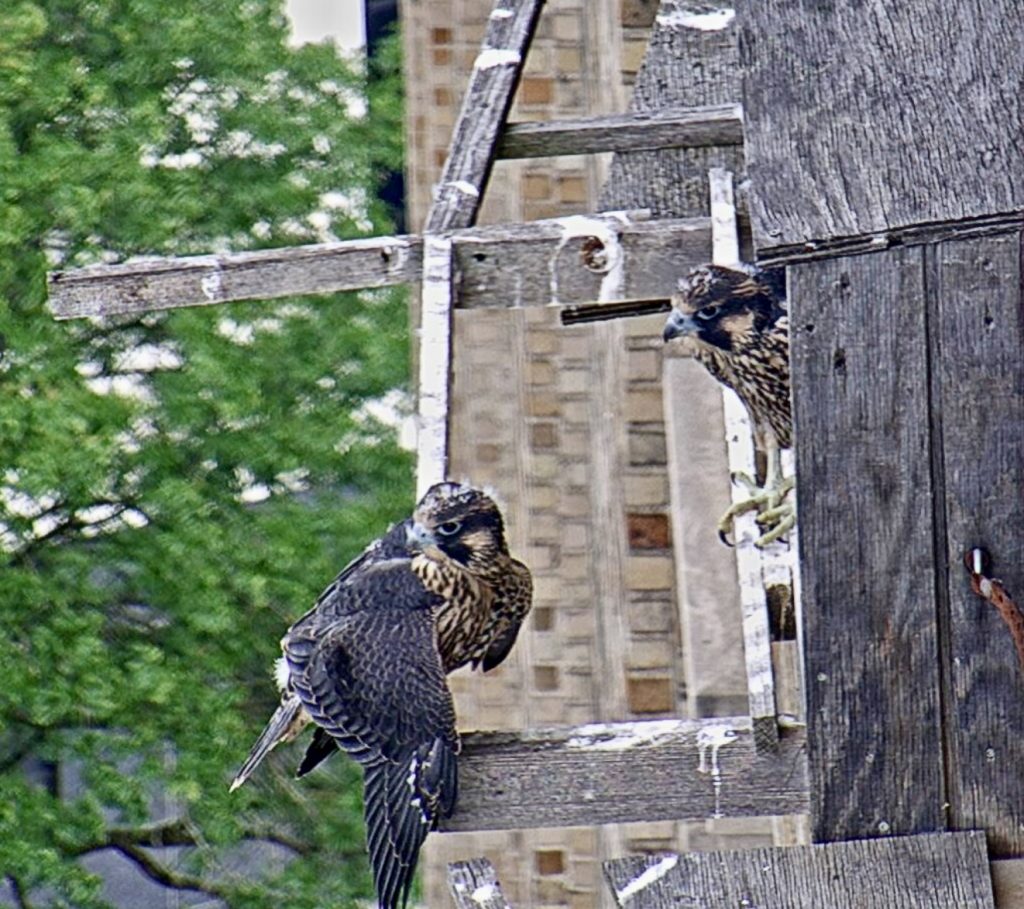
Update for Thursday, June 6, 2024
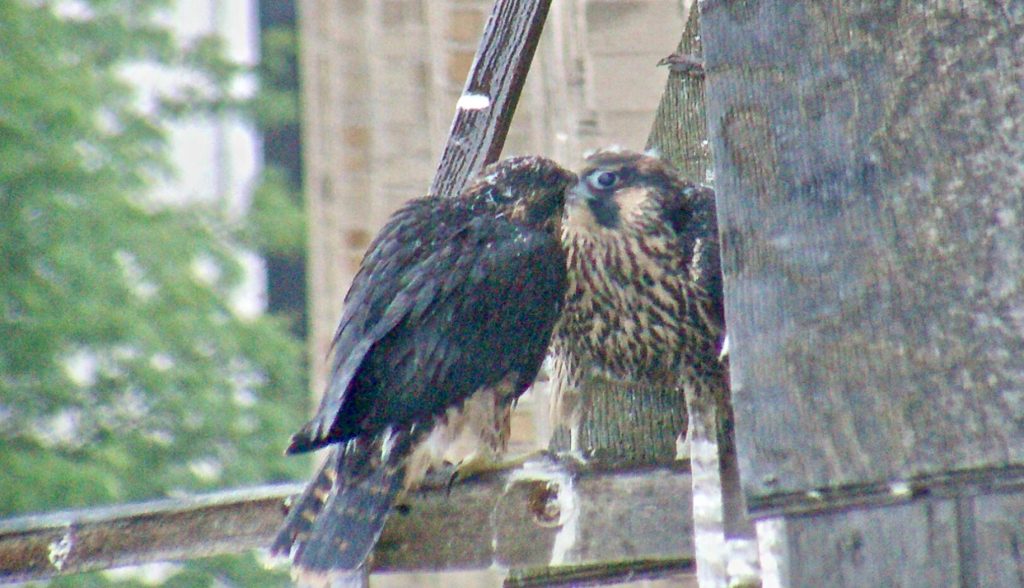
Peregrine Falcons employ a variety of techniques to manage the timing of their young’s fledging, ensuring it occurs when the fledglings are ready for the challenges of flight. Balancing encouragement and restraint, these strategies are critical for the survival and success of their offspring. As fledging time approaches, parent Peregrines gradually reduce the frequency of food deliveries to the nest. This technique stimulates the young to leave the nest and seek food, prompting them to be more adventurous, to check out areas away from the nest, to test their wings, and practice short hop-flights. Parents often swoop or hover around the nest vicinity and demonstrate other flying techniques. When they do this they are encouraging their young to mimic these behaviors. By showing the fledglings how to take off, maneuver in the air, and land safely, parents provide a live tutorial. Parents will also use food as an incentive to coax fledglings from the nest. They sometimes hold prey just out of reach or take it to a ledge away from the nest, prompting the young to work to get to the meal.
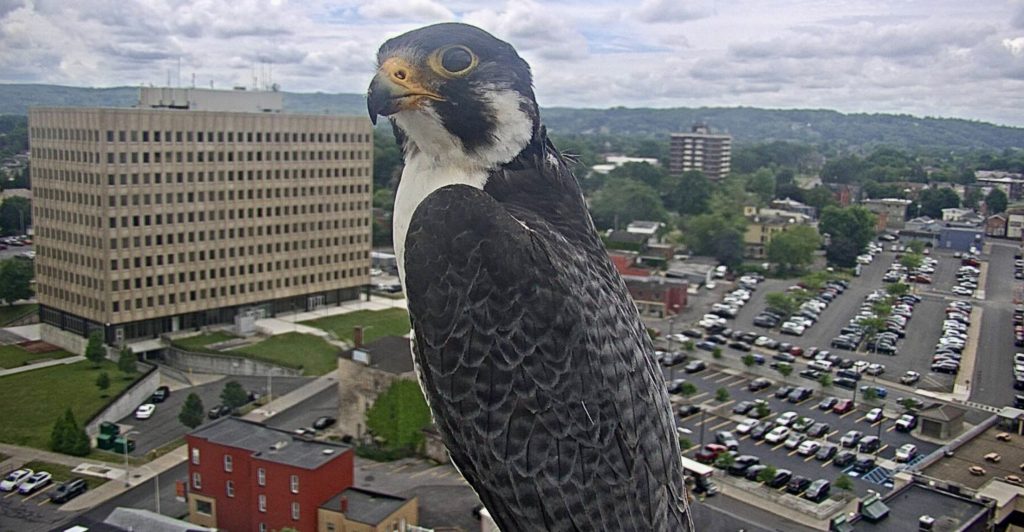
To prevent premature fledging, parents might continue to deliver food directly to the nest, ensuring the young feel secure and less compelled to leave or be too adventurous. This technique provides the necessary nutrition while allowing the fledglings more time to develop strength and coordination. If parents deem it too dangerous for their young to fledge, due to the presence of predators, people, machinery, or inclement weather, they may admit, loud piercing alarm calls, which typically serves to freeze the activities of the young and stops them from being adventurous.
